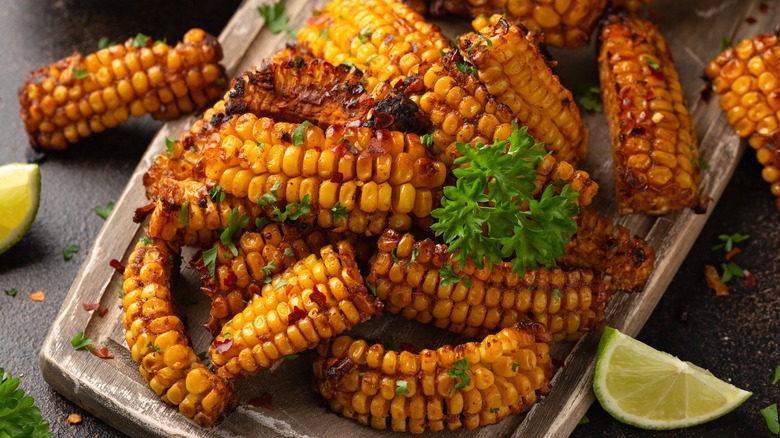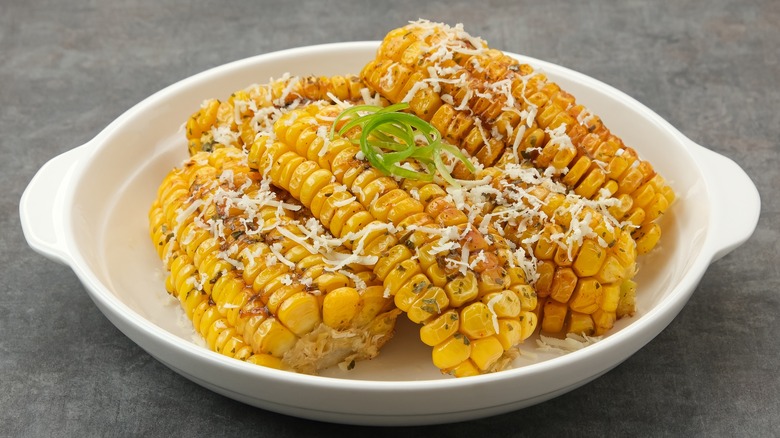Why Braising Is Key To The Absolute Best Corn Ribs
There are all kinds of great ribs out there, but if you're looking to satisfy your need to chow down on a fistful of flavor but don't want to use meat, corn ribs could be just the thing. While most people familiar with corn ribs know that they're best when cooked over a hot grill, not everyone knows the simple tip to do beforehand for perfect corn ribs every time. Luckily, we had a chance to talk all about it with chef Takahiro Sakaeda at Nami Nori in New York City. Nami Nori is currently running corn ribs as a specialty summer item, so Sakaeda has gotten very familiar with what it takes to make this dish pop.
If you've ever had the courage to try making corn ribs yourself, you're likely aware of just how difficult it can be to get the corn kernels to hold together. Basically, you need to stand the corn cob upright before carefully slicing downwards without slicing off a thumb in the process. It's infamously difficult, but Sakaeda struck a positive note.
"It's actually not as hard as you think," Sakaeda told Tasting Table. "The real trick is to refrain from cutting them until the initial braise is finished. It softens the cob just perfectly enough to slice right through." His braising trick is pretty similar to our best method for cutting corn ribs, which is to boil the corn before attempting to slice them, but braising has a few benefits over boiling.
Braising corn ribs elevates the flavor profile
Begin the braise with a mild sear, which helps kickstart that delicious char we want on the exterior. More importantly, braising uses less liquid, which means we can use the braise as an opportunity to add more flavor to the corn ribs. "It's really important to allow them to braise in a well-seasoned liquid so that they can really absorb the flavor and not just have it sit on top." Sakaeda explained.
A typical corn rib recipe will have you slice the corn cob into ribs and toss them in oil and a nice spice blend before cooking them on the grill. This is what Sakaeda is referring to when he says the flavors just sit on top, because the corn doesn't have a chance to soak up those spices. Braising the corn as a first step makes the corn easier to cut (trust us, that's a big upside) but also gives you the opportunity to force the corn to soak up even more flavor.
You don't get that same benefit with boiling because there's simply too much liquid involved. Theoretically, you could boil an entire pot of broth, stock, or some other form of seasoned liquid. However, braising is much less wasteful because it simmers the corn in a small amount of liquid, meaning the flavors are more concentrated in a braise. There are lots of ways to season corn ribs, and braising can be used with any of them.

